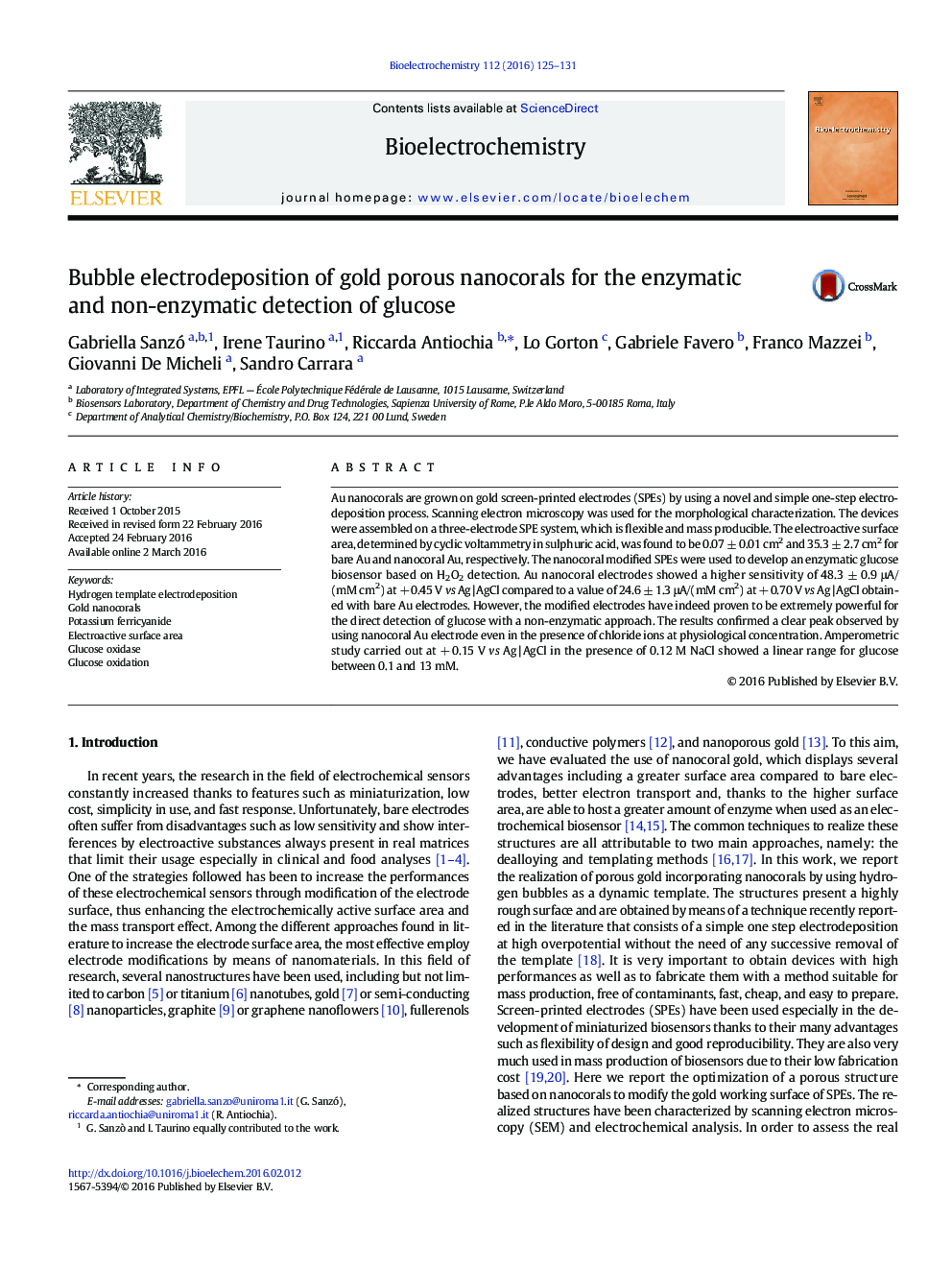| Article ID | Journal | Published Year | Pages | File Type |
|---|---|---|---|---|
| 1267769 | Bioelectrochemistry | 2016 | 7 Pages |
•Au porous nanocorals were obtained with bubble deposition method.•Nanocoral Au modified SPEs lowered the oxidation potential of H2O2.•Nanocoral Au modified SPEs allowed direct detection of glucose in the presence of Cl- ions under physiological conditions.
Au nanocorals are grown on gold screen-printed electrodes (SPEs) by using a novel and simple one-step electrodeposition process. Scanning electron microscopy was used for the morphological characterization. The devices were assembled on a three-electrode SPE system, which is flexible and mass producible. The electroactive surface area, determined by cyclic voltammetry in sulphuric acid, was found to be 0.07 ± 0.01 cm2 and 35.3 ± 2.7 cm2 for bare Au and nanocoral Au, respectively. The nanocoral modified SPEs were used to develop an enzymatic glucose biosensor based on H2O2 detection. Au nanocoral electrodes showed a higher sensitivity of 48.3 ± 0.9 μA/(mM cm2) at + 0.45 V vs Ag | AgCl compared to a value of 24.6 ± 1.3 μA/(mM cm2) at + 0.70 V vs Ag | AgCl obtained with bare Au electrodes. However, the modified electrodes have indeed proven to be extremely powerful for the direct detection of glucose with a non-enzymatic approach. The results confirmed a clear peak observed by using nanocoral Au electrode even in the presence of chloride ions at physiological concentration. Amperometric study carried out at + 0.15 V vs Ag | AgCl in the presence of 0.12 M NaCl showed a linear range for glucose between 0.1 and 13 mM.
